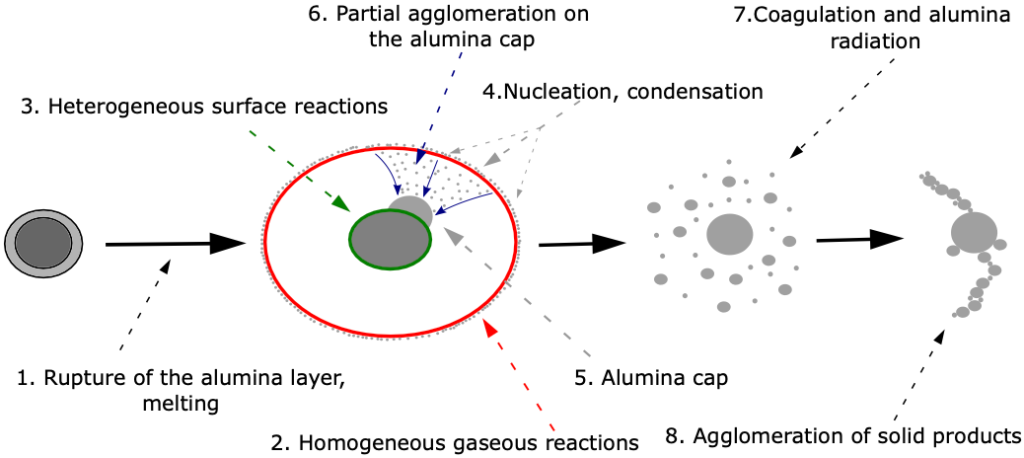🎓Jean VILLARD thesis defense
Wednesday 30 October 2024From 14h00 at 16h00
Phd Thesis JCA Room, CERFACS, Toulouse, France
Modeling and simulation of aluminum flames
🔗 https://youtube.com/live/40-Emks2cNY?feature=share

As society is moving away from hydrocarbons, there is a need for a clean way to store and transport energy over the globe. For this need, metal fuels are very attractive and excellent candidates as alternative carbon-free and renewable fuels. Due to their high energy density, availability, stability and low cost, metals and especially aluminum could replace hydrocarbons in many applications. In addition, metal oxides are solid and may be easily collected and recycled (J.M. Bergthorson et al., Applied Energy, 2015). Aluminum is already well known as a fuel, used for many years in space propulsion. However, the detailed understanding of the combustion of aluminum particles remains a challenge which requires to combine sophisticated experiments with numerical simulation. The modeling of aluminum combustion then must take into account all existing phenomena, from melting and evaporation of the metal particles to gaseous and heterogeneous oxidation and finally condensation and solidification into metal oxide particles. In this work, a complete model for burning aluminum particles has been developed and implemented in the massively parallel Navier-Stokes compressible solver AVBP in order to compute a stabilized laminar flame. The model includes the dual composition of the aluminum particles with an alumina cap, heterogeneous surface reactions and condensation of the combustion products, and nucleation of products into particles following Finke et al. (J. Finke., Combustion and flame, 2023). The Lagrangian tracking of these product particles is an original feature of the model, with regards to the literature where an Eulerian formulation is mostly reported. It offers the possibility to give more details about the formed metal oxide particles, in particular their size. Results and analysis of 1D and 2D stabilized aluminum laminar flames obtained with this model confirm the validity of the approach.
Jury
| M. Fabien HALTER | Université Orléans – ICARE/CNRS | Referee |
| M. Aymeric VIÉ | EM2C | Referee |
| Mme Bénédicte CUENOT | SAFRAN | Examiner |
| M. Christian HASSE | TU Darmstadt | Examiner |
| M. Xiao Cheng MI | Eindhoven University of Technology | Examiner |
| M. Jean-Christophe JOUHAUD | CERFACS | Thesis supervisor |
| Mme Eleonore Riber | CERFACS | Invited member |
No content defined in the sidebar.

